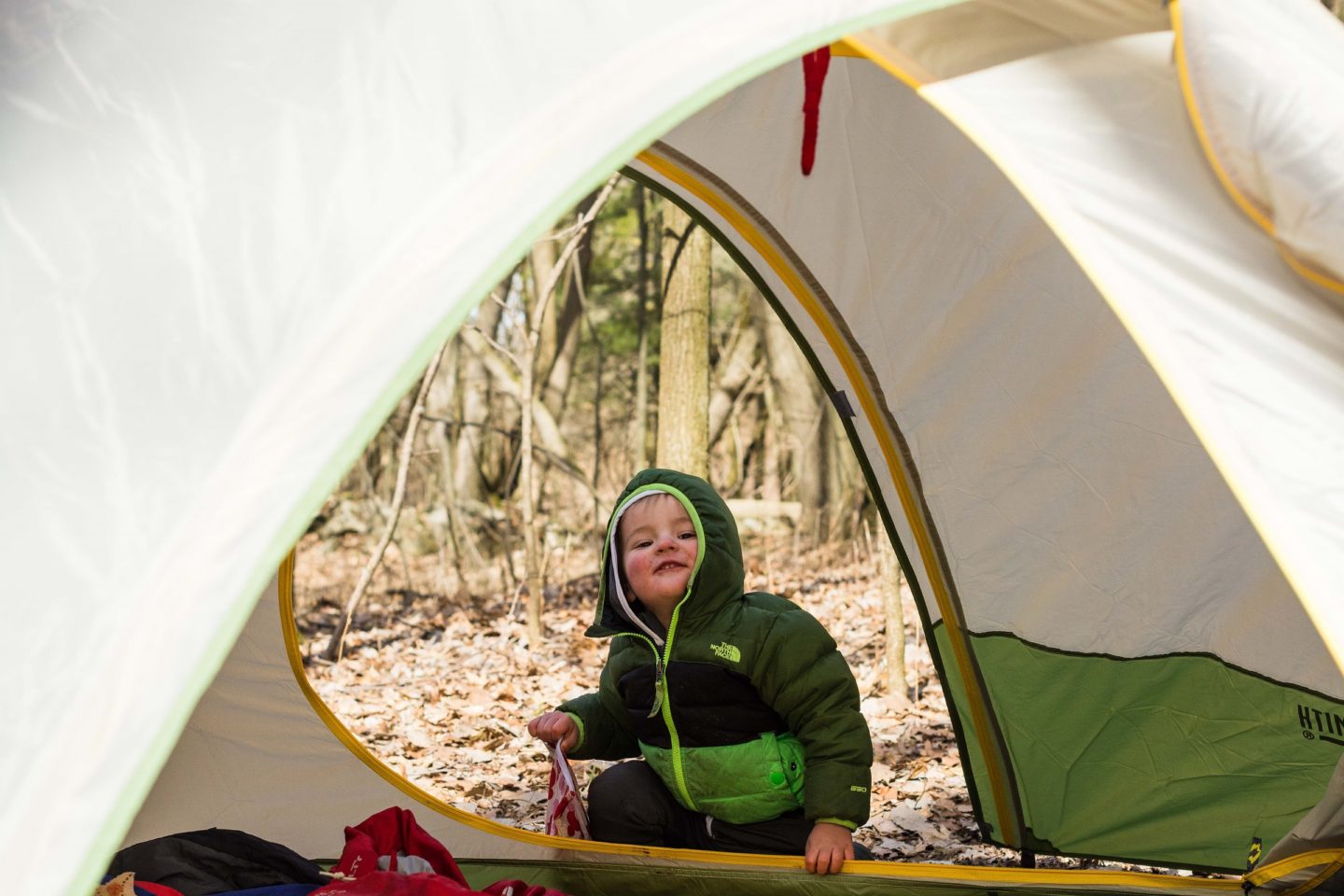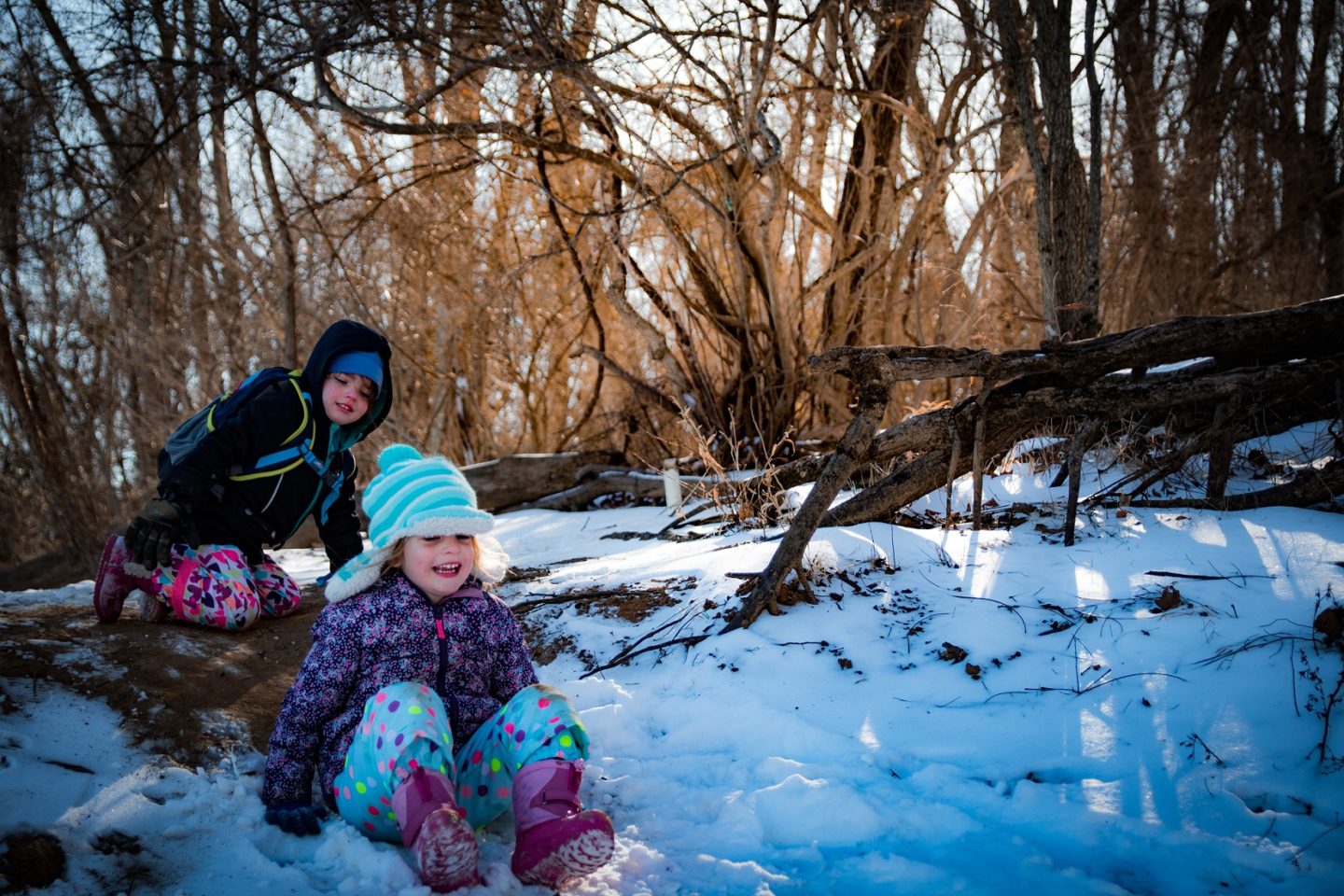Tips for Cold-weather Camping
 Pass the hot chocolate. You already know that camping during late fall or winter can be chilly, but here you are. Your campsite is reserved, your partner is excited to go, and the kids can’t wait for the adventure. But all you’re thinking about is how cold it is going to be. Cold weather camping can be enjoyable for any family. All you need to know is how to make hot chocolate outside and the basics of cold weather camping that I’ve broken down in the steps below.
Pass the hot chocolate. You already know that camping during late fall or winter can be chilly, but here you are. Your campsite is reserved, your partner is excited to go, and the kids can’t wait for the adventure. But all you’re thinking about is how cold it is going to be. Cold weather camping can be enjoyable for any family. All you need to know is how to make hot chocolate outside and the basics of cold weather camping that I’ve broken down in the steps below.
Protection
Tents Tents are important because they provide shelter and keep out bugs as well as damp moisture in the early morning. For camping with two people, a 2-person tent is sufficient. However, for camping with kids, you’ll want at least a 4-person tent such as the Big Agnes Titan 4 mtnGLO Tent. The kids will enjoy the lights that the mtnGLO tent provides and you’ll enjoy the space. For a larger family, check out a 6-person tent like the Adventure Dome 6-Person Tent. For more insight on family camping tents, check out The New Era of Family Camping Tents.
Sunscreen and Insect Repellent Protection from the sun and insects for you and your baby is the final step that you need to remember. Always bring sunscreen and bug spray for protection. This kit with SPF 50+ sunscreen spray + natural insect repellent from Babyganics will make the great addition to your gear kit for camping. Just because it’s cold outside doesn’t mean that there won’t be bugs or sunburns.
Insulation
For insulation purposes, you’ll need to remember the right clothing, sleeping bag and sleeping pad so you can stay warm during those colder evenings when the temperatures dip.
Sleeping Bag Besides clothing, your next most important set of gear is your family’s sleeping bags. This will keep your family warm throughout the night and early morning. Your priority when considering sleeping bags should be the temperature rating. Ratings are simple. If the low for the night is going to be 35, you’ll need a 35-degree sleeping bag. If the low for the night is going to be 17, you’ll need a rating under 20. It’s also important to understand that women’s bags are warmer than men’s bags since men tend to sleep warmer. So, you may need to get your own women’s bag.
The best way to stay warm would be to get a one-size-fits-all sleeping bag for you and your family. Nemo makes my favorite sleeping bags for all types of weather, and the Jazz Duo Sleeping Bag is a comfortable fit for the whole family. For more about duo sleep systems, read Snuggle Up – Comparison of Double Sleeping Bags. If you are car camping, I recommend bringing your own pillows from home. If you are backpacking, Sea to Summit makes a great lightweight pillow. For more about kids’ sleeping bags, check out Sleep Soundly – Review of Kids Sleeping Bags. If you’re worried about your baby or child getting cold outside of the sleeping bag around camp, Rumpl makes great down blankets.
Sleeping Pad The final step in insulation is a sleeping pad. Sleeping pads are great for cold weather camping because they provide warm insulation from the cold ground. If you choose to bring a duo sleeping bag, your best bet is to go with a duo sleeping pad. If you have singular sleeping bags, definitely bring an insulated sleeping pad.
Clothing The most important part of cold weather camping is to remember layers for clothing. My go-to piece for late fall or winter weather is a sweater fleece pullover. My final layer, especially during early mornings or at night, is an ultralight down hooded jacket. I recommend that the kids have theirs too. If you’re camping with a baby or toddler, it’s crucial that you keep your child’s head warm with a hat and feet covered with warm socks. For more about layering your clothing for cold weather camping, check out Love the Layer You’re In: Cold Weather Camping. 
Nourishment
Making sure your family has enough nourishment for the trip will keep everyone happy, especially when it comes to hot chocolate.
Food For cooking while car camping, a camp stove is highly efficient. Fresh Off The Grid provides many great recipes for camping, such as this Vegan Tortilla Soup or Apple, Bacon, and Cheddar Grilled Cheese recipe. If you’re worried about keeping ingredients fresh, I highly recommend the Yeti Roadie 20 cooler. It is a game changer when it comes to car camping! For cooking while backpacking or for all hot chocolate and coffee needs, a Jetboil stove is a great tool for the wilderness. For healthy and easy to make backpacking food, GoodTo-Go has a lot of great meals, such as Pad Thai or Granola.
Hot chocolate is highly recommended, especially for camping with kids. All you need is either a pot with your camp stove or your Jetboil stove and a packet of Swiss Miss from your local grocery store. Heat water in the pot or Jetboil, add Swiss Miss mix, and voila! Gourmet hot chocolate for you and your family while camping in cold weather. Hot chocolate just tastes better outdoors. If you’re concerned about packing snacks for your children, there are Ways to Pack Snacks and Food on Road Trips.
Necessities
Backpacks Don’t forget your pack – backpack that is. If you’re hiking with a baby, Deuter has created the Kid Comfort Air that will allow you to carry your child comfortably on your back while hiking. If your kid is ready to hike on their own two feet, Deuter also has a line of backpacks for kids with the Kikki, Pico, GoGo XS, Junior, and more. For adult packs, check out Deuter’s website. I recommend getting fitted at your local outdoors store or REI before purchasing. It is important that your backpack fits right for hiking and especially backpacking purposes. If you decide to take a hike during your cold weather camping experience, you can familiarize yourself with How to Prepare for the Unexpected When Hiking in the Cold.
Adventure Medical Kit For hiking and camping experiences with your baby and family, safety should always be your priority. Don’t leave home without an adventure medical kit. I’ve added scissors, leukotape, and a knife to my kit. Also, if you haven’t checked your kit in a while, you should make sure that everything is restocked and ready to go. I always check my kit before a multi-day adventure. If you’re still worried about camping with kids, make sure to read The Ultimate Guide to Camping with Kids. Good luck! You’ve got this. And, don’t forget the hot chocolate.
Do you have any advice for families considering cold-weather camping? Please share with us in the comments below!
Read more:
- The ultimate guide to camping with kids
- The new era of the family camping tents
- Snuggle Up – Comparison of Double Sleeping Bags
ABOUT OUTGROWN
OutGrown is a 501(c)(3) nonprofit that works to create a world where everyone can enjoy the physical and mental benefits of spending time outside. We are focused on creating opportunities and removing barriers to access so families with babies and young children can take their first steps outside. We believe all families have the right to connect with nature, benefit from spending time outdoors and be inspired to a lifelong love of nature. Since its grassroots inception in 2013, OutGrown is a growing community of 280,000 families and over 300 volunteer Branch Ambassadors. More information on all of our programs can be found at WeAreOutGrown.org
EDITORS NOTE:
We hope you enjoyed reading this article from OutGrown. We’re working hard to provide our community with content and resources that inform, inspire, and entertain you.
But content is not free. It’s built on the hard work and dedication of writers, editors, and volunteers. We make an investment in developing premium content to make it easier for families with young children to connect with nature and each other. We do not ask this lightly, but if you can, please make a contribution and help us extend our reach.
Related Content




Comments